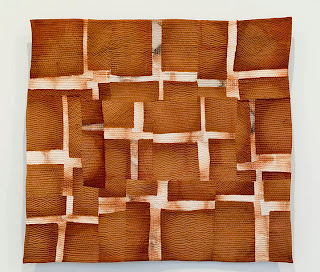 |
| Postcard #3 (From Postcards from a Past'2003) by the author |
I can’t remember the sandpit but there is a photograph of me playing in it, left hand held high as I run towards the camera. Look at this, a daisy-chain, a fairy-chain, a strand of time.Mention sand and I think of another time years later. Lying on my back staring up into the night; the sound of waves in the dark stars above: stars upon stars upon stars drawing ever upwards dissolving boundaries pondering the possibility of endlessness. There are shapes and pattens within the constellations but I do not countenance identification it tells me nothing of the possibilities above me as I lie in the still-warm slight-damp sand. I struggle to comprehend impose meaning while considering the possibility none is possible.Infinity offers no explanation. It attempts to label the unnameable, beyond number beyond limit beyond being and by doing so ends up by limiting itself. It is labelling the known unknown (which in the act of naming must itself become known, it is the unknown unknown the other possibilities which lie beyond the horizon of knowing which draw me).The universe may be considered a fabric of reality knitted together in dark matter he tells me. The stars are visible points formed of light matter, dropped stitches within the dark cloth, loose networks of filaments stretching across time and space. Knit one purl one knit one purl one a binary code in repetition which shifts evolves in errors the hesitation dropped rhythm of stitch. Chaos theory string theory or loop quantum theory with space and time made of coiled ribbons, once tangled become particles. The many strands of time entangled enfolded envelope me.It is this repetition of stitch and not the single stitch itself which offers consolation. The knitted stitch, one needle through the stitch on the other, strand forward and looped around the needle, stitch pulled through. Knit stitch, purl stitch, increase, decrease, cast off but not the universe.
(From 26 Object Project, 2008)
The arrival of Edgar Levensen's paper, 'The Enigma of the Unconscious' (2001) last Wednesday provided that leap of understanding that perhaps, just perhaps, the questions I had been asking early in this project about 'space' and within that the void and more recently the workings of 'smooth' space could be answered by the notion of 'hyperspace'.
Levensen's paper is about the unconscious, and the role of the analyst in the process of treatment yet I believe he manages to open up all sorts of intriguing ideas which include D&G's concept of 'smooth space'. He states;
"Conscious thinking follows the rules of Greek logic--deduction, categorizing, inferring--our Western cultural heritage. [a form of 'striated space']. In contrast, unconscious thinking seems closer to free-ranging hypertext...where words and concepts are pursued to their most unexpected implications ['smooth space']. (p247--my emphases)The resulting text he points out, '...is a self-regenerating process'. Levensen then goes on to state:
I think the brain is individual but mind is a field phenomenon, a network, a web. (p250--my emphasis)It is that glimpse of possibility that the use of 'smooth space' can be helpful in generating new ways of seeing, new ways of hearing. An interactive 'cabinet of curiousity'






